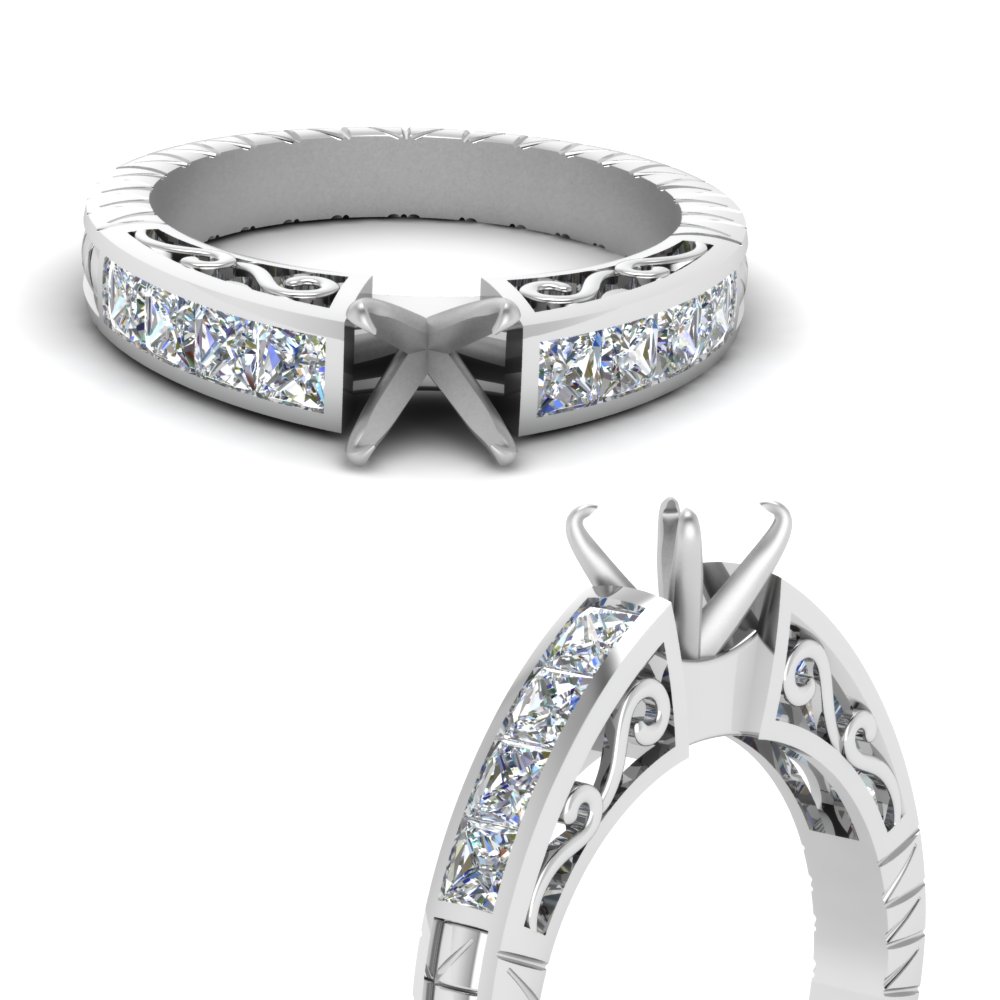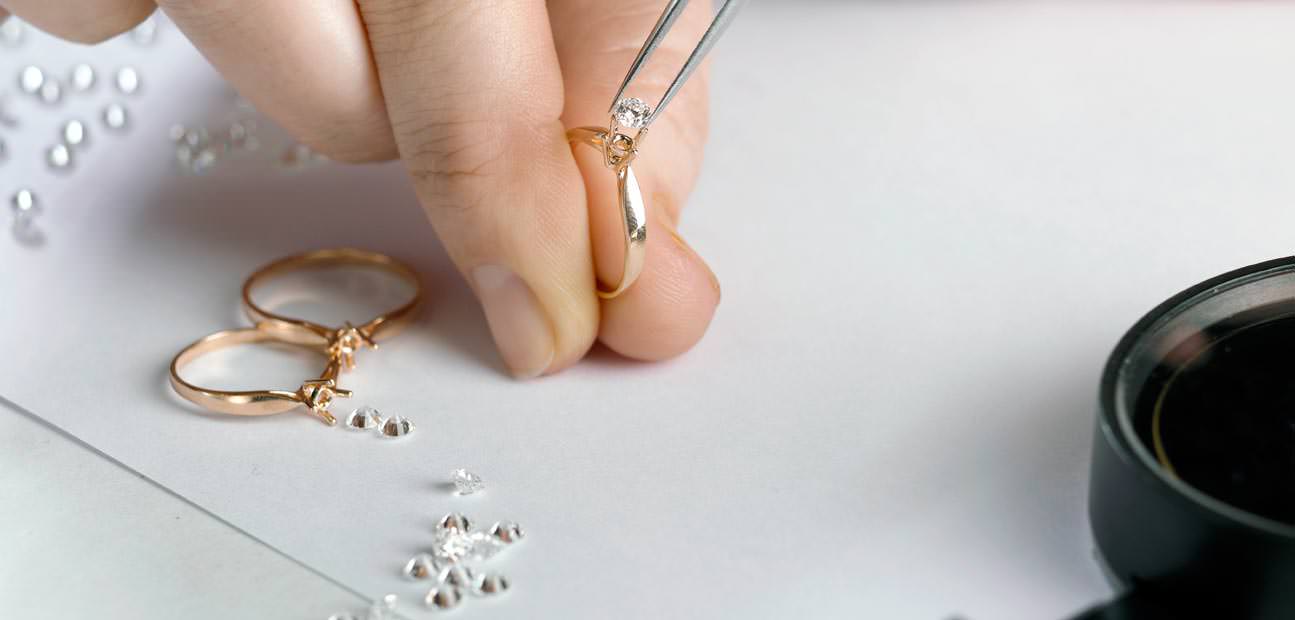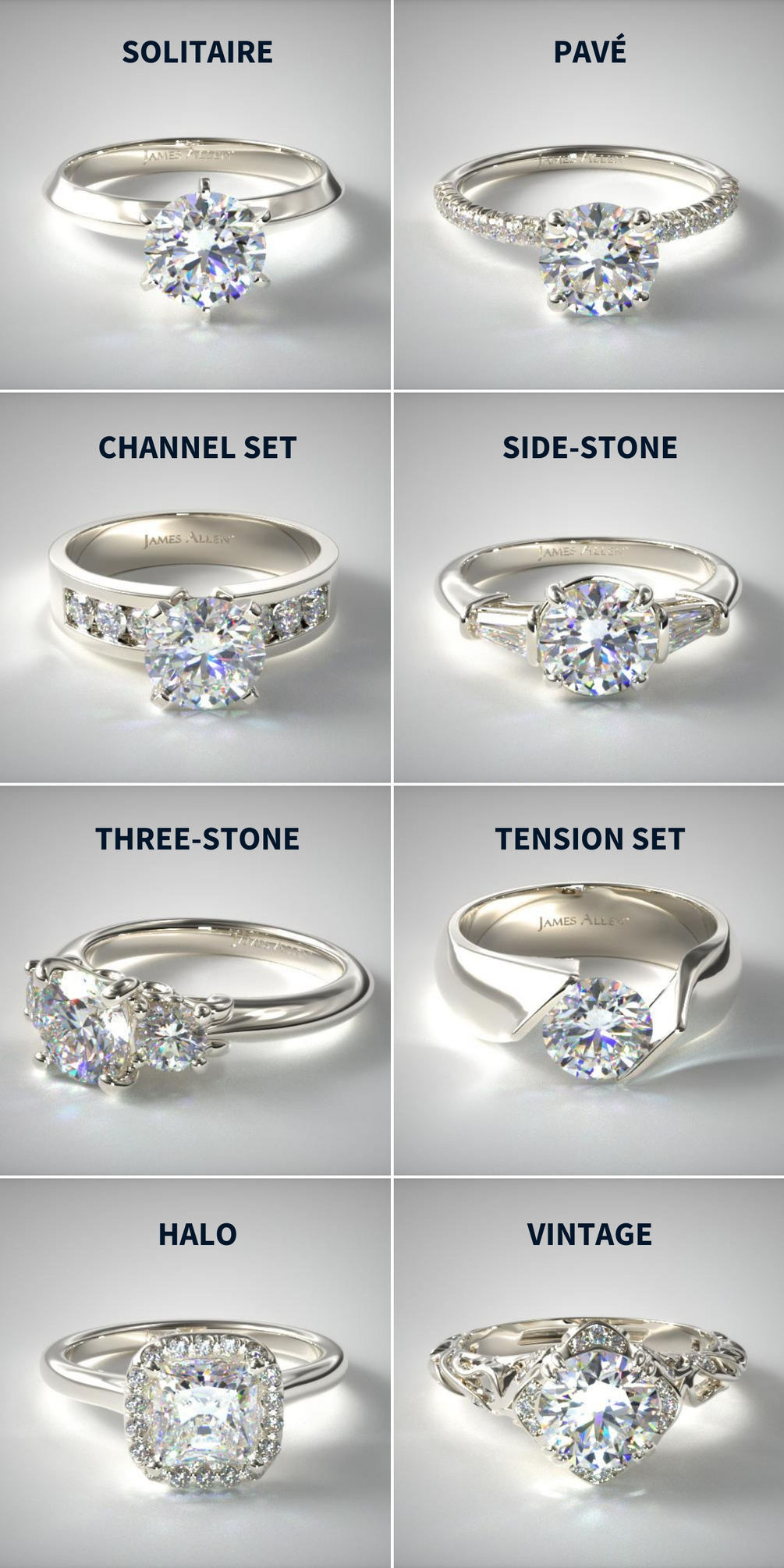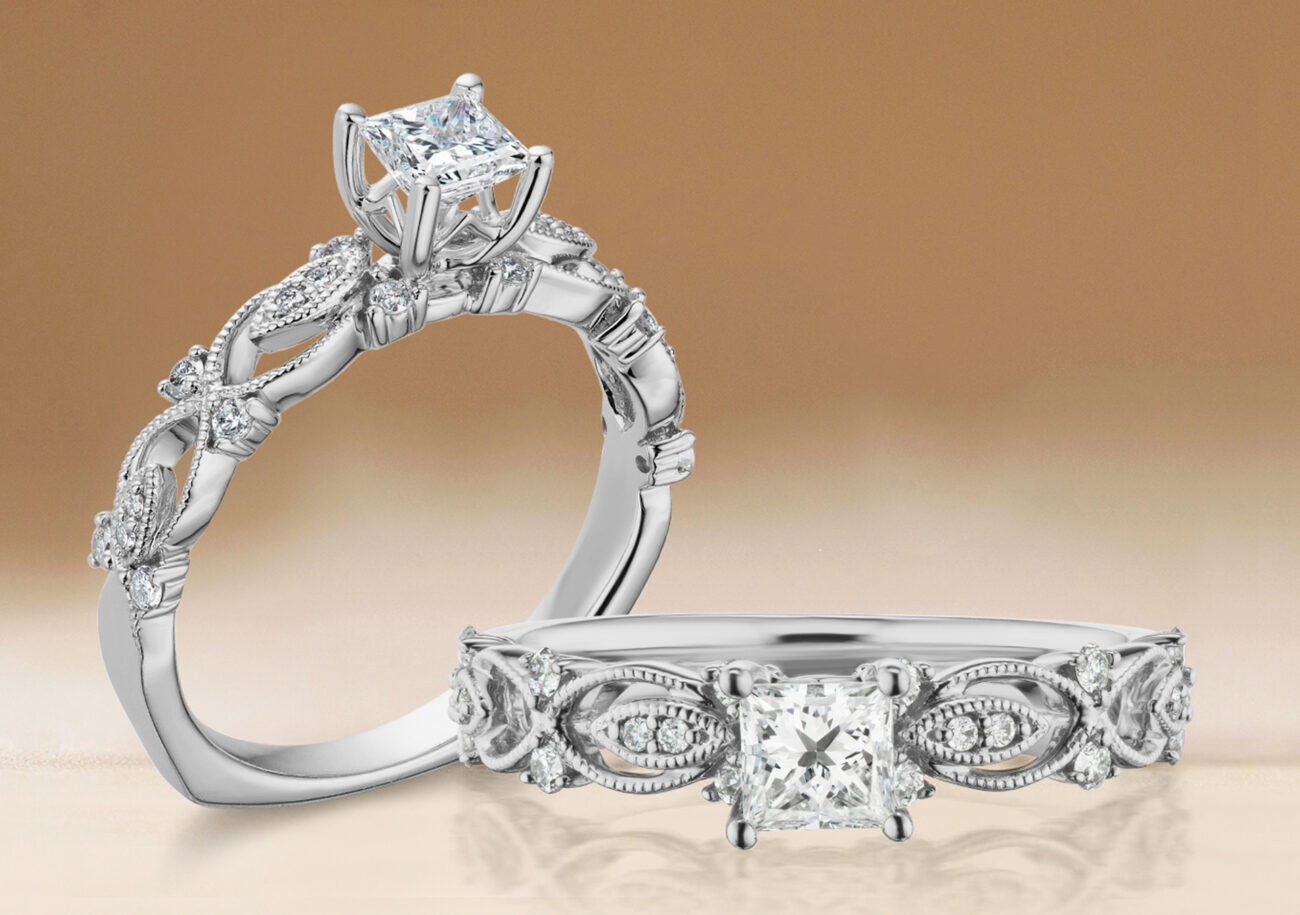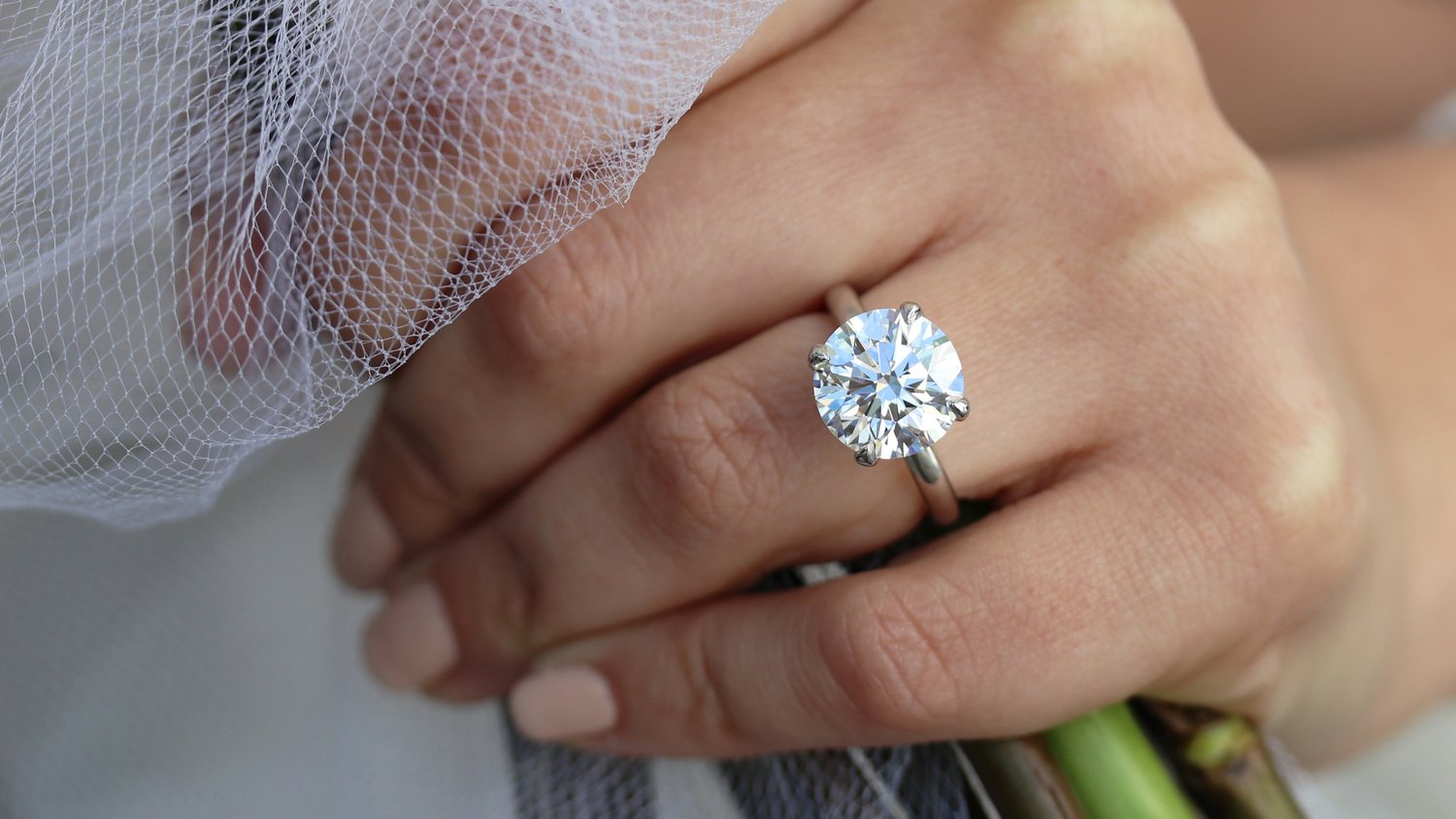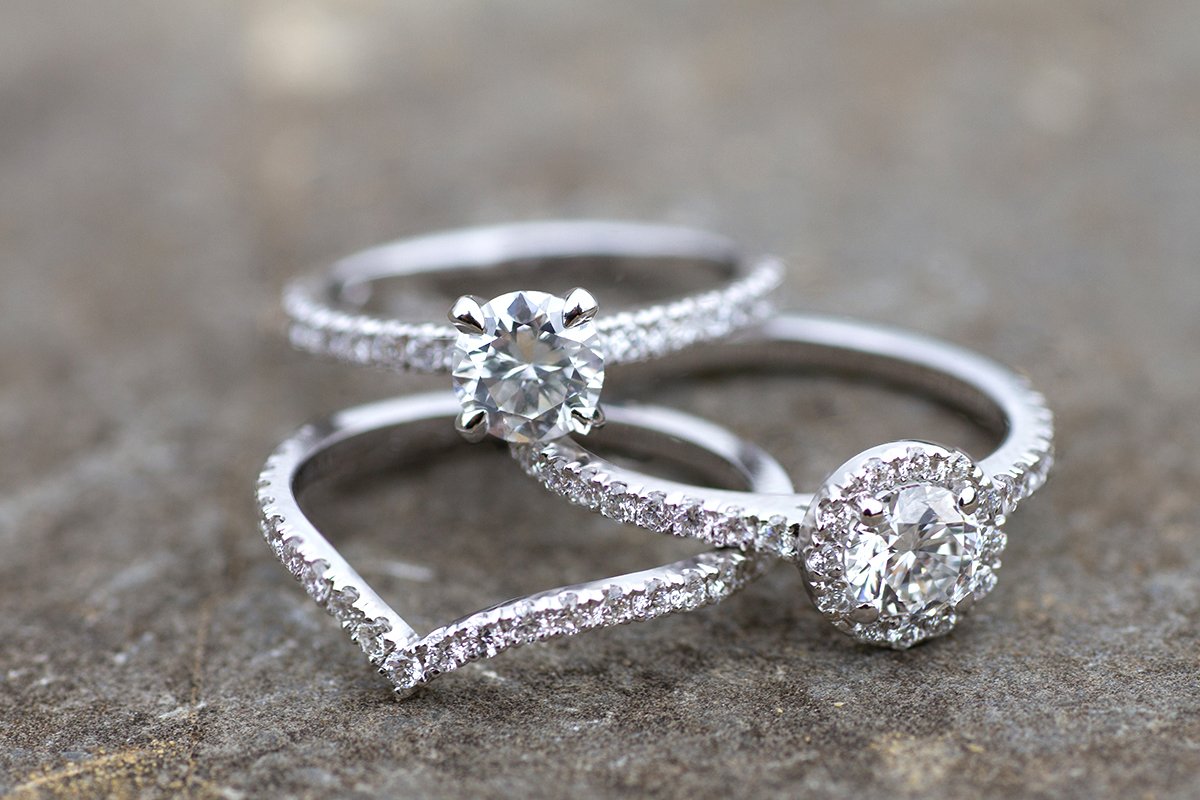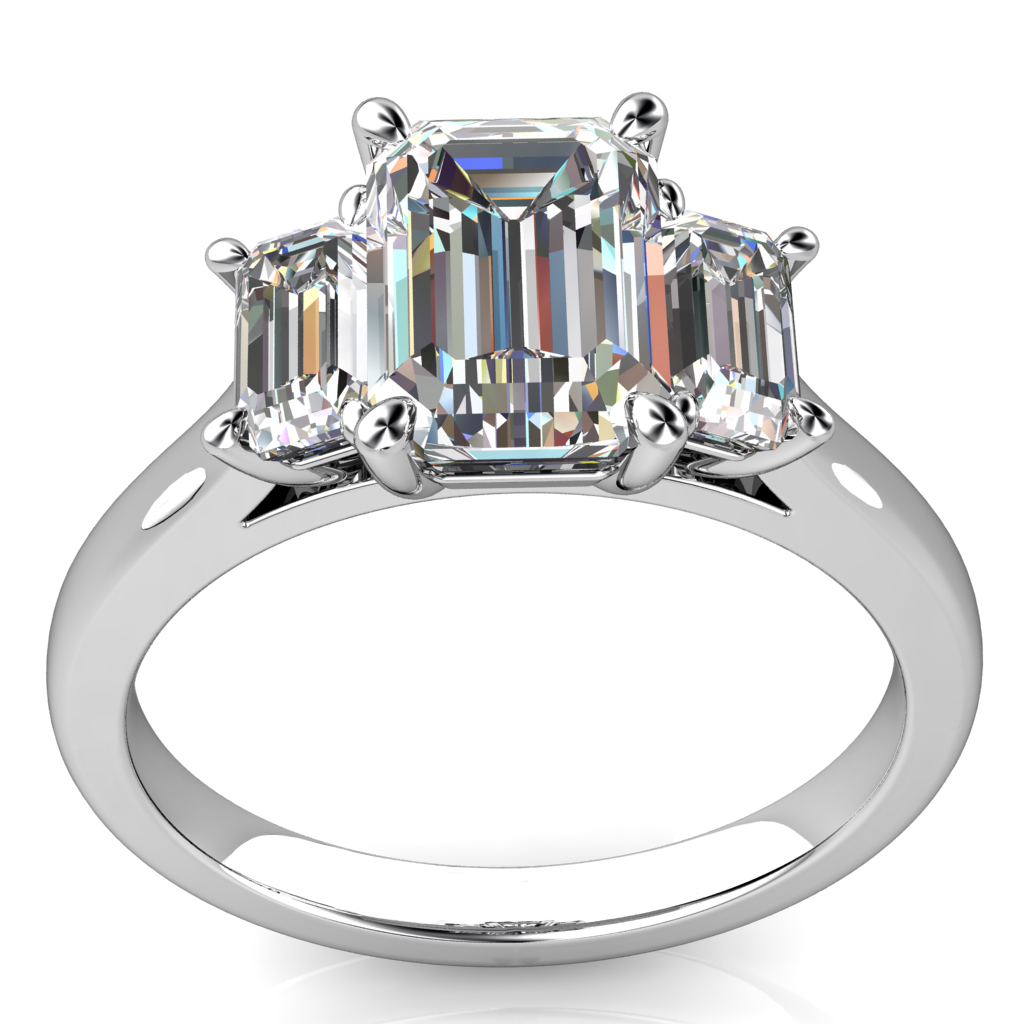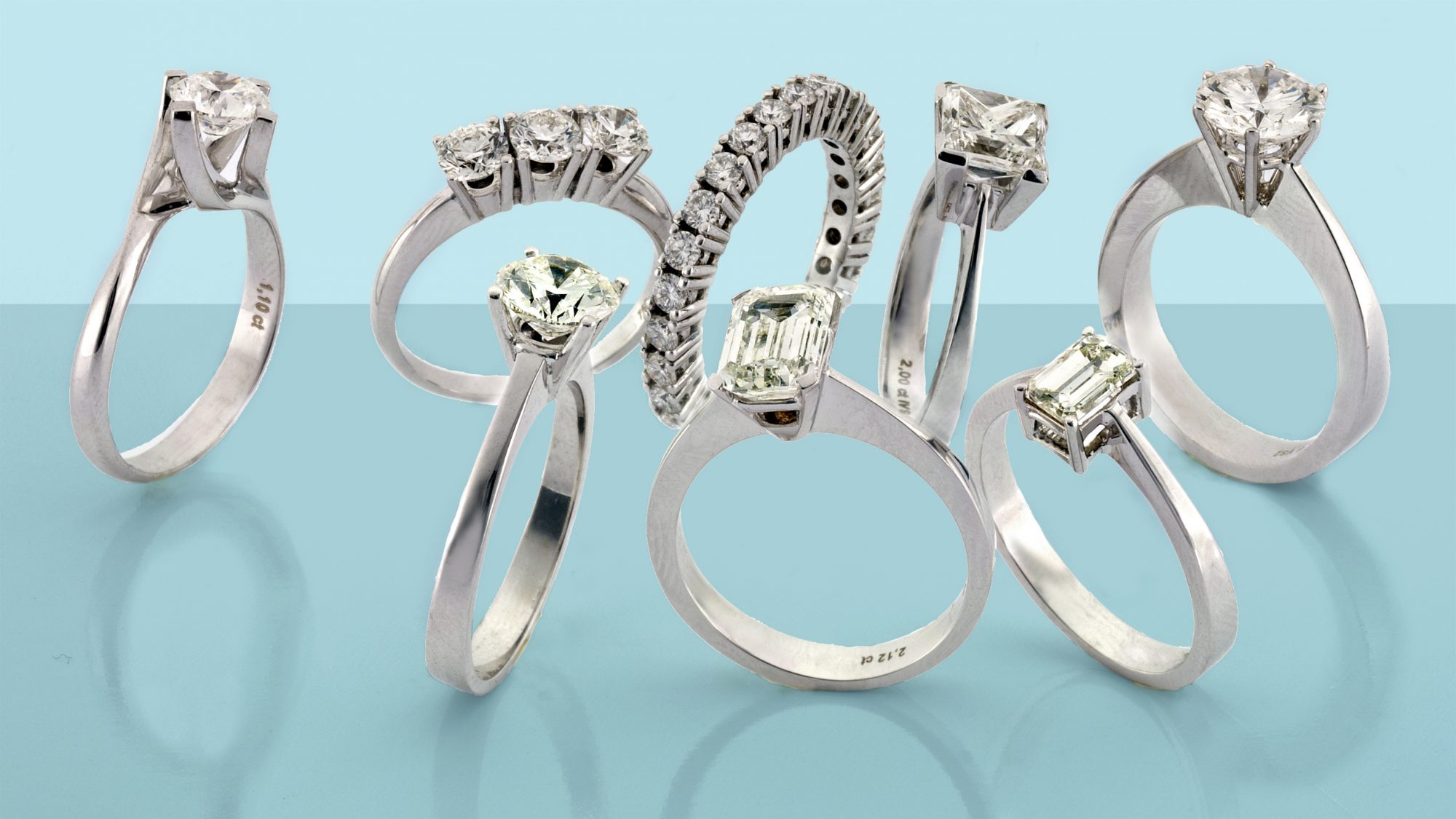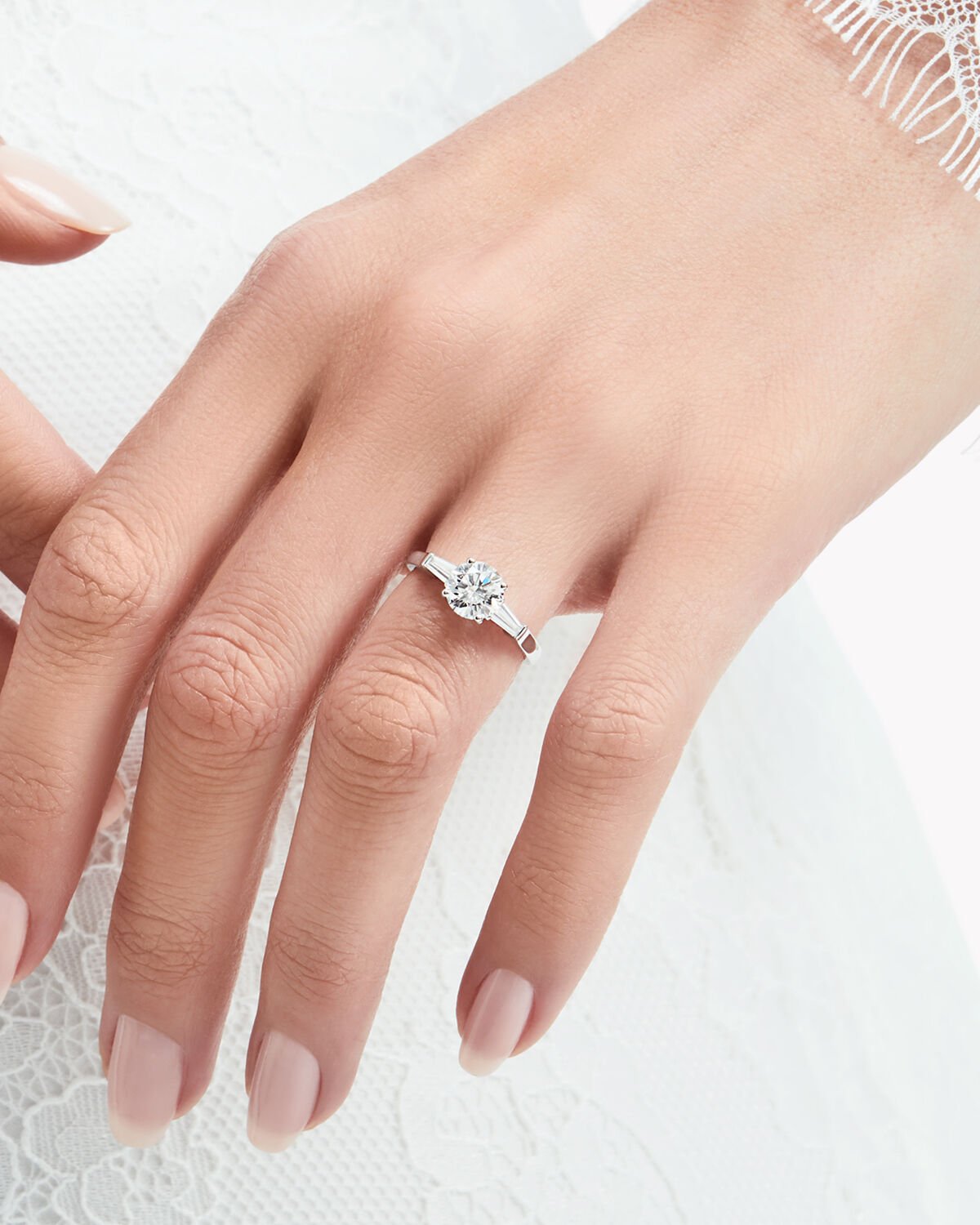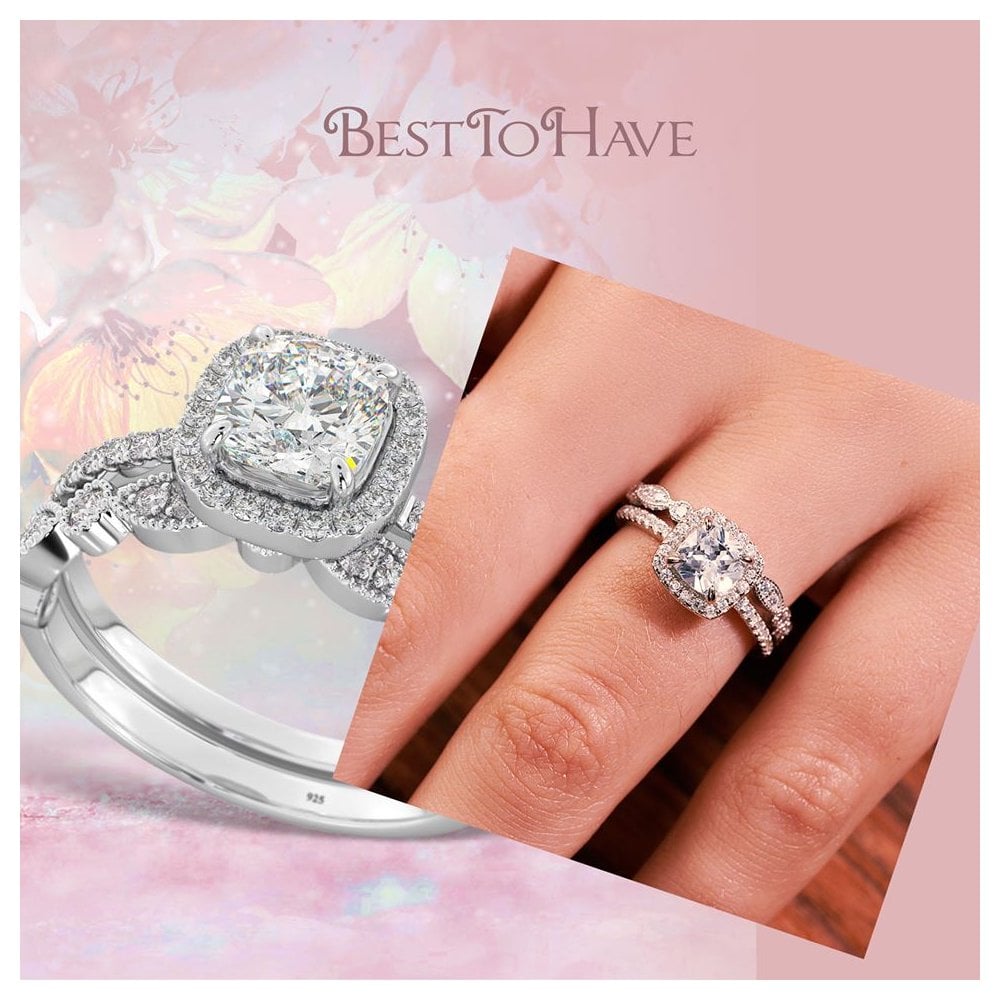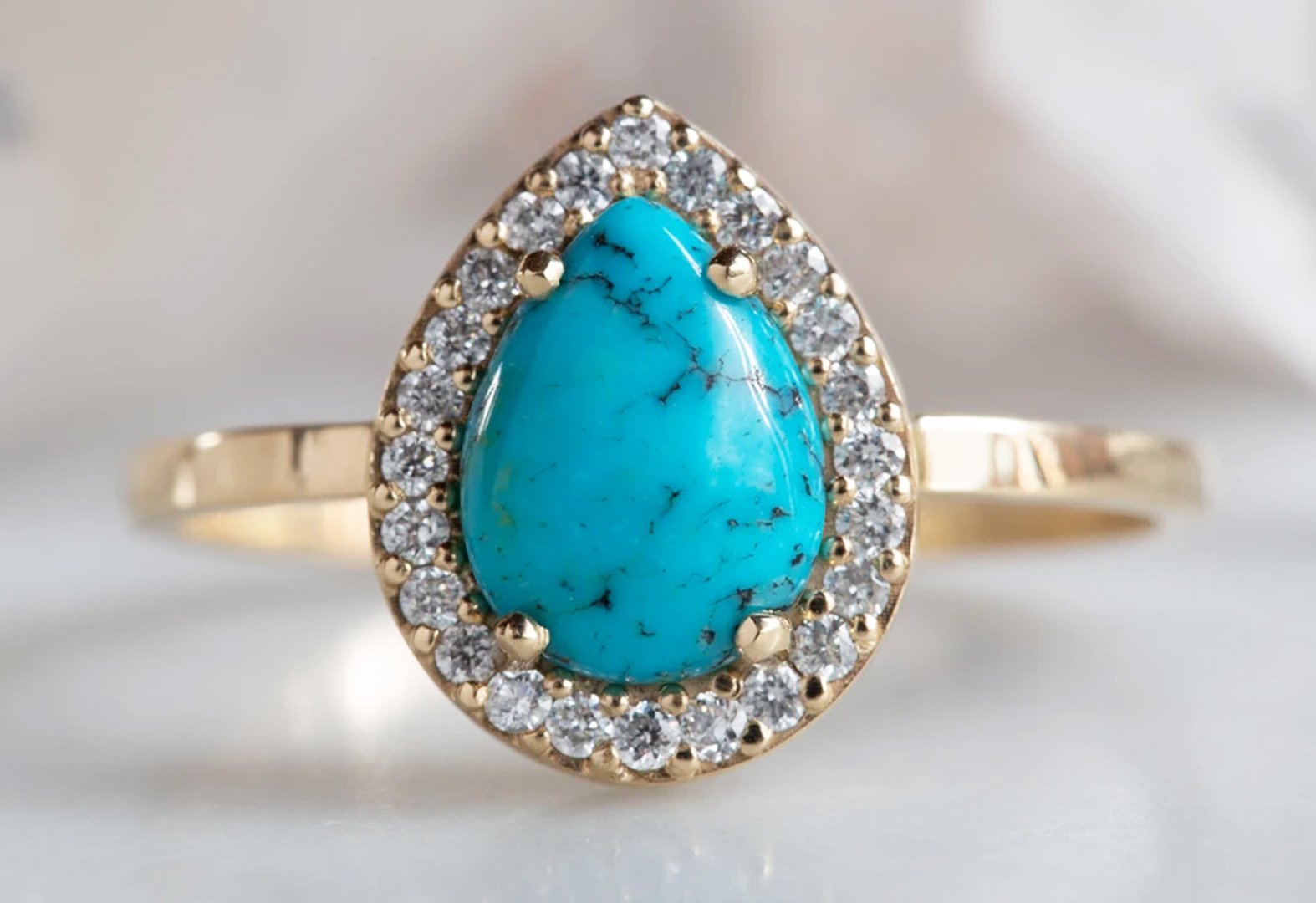A. Engagement Ring Settings
Are you looking for a classic or completely unique engagement environment? You decide. A traditional engagement environment or one that exudes a modern sensibility? It depends on you. We have the widest range of configurations. One of them perfectly matches your style. Whatever your choice, your ring will be a beautiful reflection of you. After all, it’s your time to shine.
1. Battery adjustment
A single diamond in a traditional, simple setting, usually with four or six prongs. This is a traditional engagement ring setting and can be customized with diamond bands or a ring saver or ring wrap (which literally protect or envelop the main ring and also “frame” the larger diamond to make it stand out. ). The pin engagement ring setting is the most common setting and is sometimes called the claw setting because the pins hold the diamond in place like a claw. This setting really emphasizes the diamond.
2. Channel configuration
This engagement ring setting is most commonly used for wedding and anniversary rings. A channel configuration places the stones side by side without being separated by metal. In a Chanel setting, the outer metal crest is worked over the edges of the stones. This protects the ring area from diamonds better than a pearl or pin setting and ensures a smooth outer surface. The Chanel bezel enhances the diamond with a little more glamor and style.
3. Bar adjustment
Similar to the channel setting, the bar type setting is also most commonly used on birthdays and wedding rings, but it can also be seen on bracelets and necklaces. The bar configuration type includes a diamond band where each stone is held by a long, thin bar that is shared by two stones. The bar atmosphere combines a contemporary and classic look. Diamonds are exposed on two sides so you can see more sparkle from the diamonds.
4. Light adjustment
With a frame setting, an edge holds the stone and surrounds the gemstone. Frame configurations can have straight edges, jagged edges, or any shape to accommodate the stone. The back of the bezel settings can be open or closed and is used to set earrings, necklaces, bracelets and rings. The warmest color diamonds look stunning when the bezel is set in yellow gold.
5. Gypsy attitude
Perhaps you know the gypsy attitude of men’s jewelry you’ve seen. The ribbon in the Gypsy environment is a continuous piece that gets thicker at the top. The band is shaped like a dome and the stone is placed centrally and level with the band. There are no spikes in the Gypsy environment; therefore, the appearance is smooth and clean. The gypsy configuration is sometimes referred to as the leveling configuration, wefting configuration, or the polishing configuration. Similar to the bezel setting, the diamond crown is actually the only exposed area within the gypsy setting.
6. Tension adjustment
A tensioned diamond setting is held in place by pressure from the metal of the band that supposedly “compresses” the stone. The result is an ultra-modern, fashion look that can be used to define necklaces, earrings and rings. The voltage setting is a modern or futuristic look, where the diamond appears to be floating in the air. The tension adjustment allows the diamond to be seen in full view and is generally easy to clean.
7. Illusion attitude
An illusion backdrop is made of smaller stones, often princess cut, placed side by side and held underneath to create the illusion of a larger diamond. This setup is more complicated than others and creates a visually interesting piece. The illusion ring setting can also be a small diamond surrounded by patterned precious metals, giving the illusion that the diamond is larger than it actually is. In either case, the goal is to provide a unique and attractive ring.
8. Cluster configuration
The cluster setup involves a larger center stone with several smaller stones. It was developed to create a beautiful piece of diamond jewelry from many smaller stones. The cluster configuration gives the appearance of a larger stone. Sometimes the cluster is molded into shapes or designs to improve the ring’s appearance. This attention-grabbing attitude is often more exclusive and gives it a timeless character.
B. Your Ultimate Guide To Diamond Ring Settings
After selecting a stone for your engagement ring, you can choose the perfect setting to complement it. Although the stone can cost up to 90% of the cost of the ring, the setting really defines the style of your engagement ring and shows off the best facets of the stone. When shopping for an engagement ring, keep an open mind when it comes to diamond ring settings. Ask lots of questions and note the different ring configurations. When choosing an engagement ring, keep your budget, lifestyle and design preferences in mind to ensure you and your diamond are a perfect match. Before purchasing a ring, take a look at the 10 most popular types of ring settings.
1. Teeth adjustment
Pin configuration is the most common type of engagement ring configuration and includes three to six “claws” that hold a stone securely to a metal “head” or “basket”. The tips can be pointed, rounded, flat or V-shaped and serve as “pockets” for the corners of a square stone. When deciding between four and six teeth, keep in mind that four teeth show more of the diamond, while six teeth hold it more securely, but can overwhelm a smaller stone. If you have a heart-shaped, marquise, or pear-shaped stone, its tips should be placed in a V-shaped tip for protection, while flat tips are recommended for emerald-cut stones.
a. You will love because
- A pin setting allows for greater exposure from all angles and therefore maximizes a diamond’s brilliance and “illuminates” vividly colored gemstones.
- They use less metal, which generally means less time and money is needed than other types of adjustments.
- Allows for easy stone cleaning.
- It securely holds even the most fragile (or soft) gemstones in place.
b. You may not like it because
- It offers less protection to the stone than other fastening styles because most of the waist (the outer perimeter of the stone) is exposed.
- It can get caught in hair or clothing more easily.
- Tooth settings set to a high level can scratch and injure other people if brushed on them and are difficult to fit into gloves. (Lower teeth settings are available and are more convenient wherever you are.)
2. Pavé Configuration
From the French word for “paved”, a pavé configuration (pronounced “paw-vay”) consists of rows of several tiny stones that are fitted into holes that line up with the surface of the ring. The surrounding metal – white gold or platinum for white stones so that it doesn’t stand out – is then elevated into pearls that hold the gems. The result? A super shiny shaft that looks like a street paved with precious stones.
a. You will love because
- Pavé adds extra sparkle to your ring and gives the illusion of more and bigger diamonds than they really are.
- It allows for an uninterrupted flow of design of varying widths.
b. You may not like it because
- Pavé is not recommended for fragile gemstones, although the proximity of the stones provides good protection for the belt of each stone.
- The surface is flat, but not as smooth as a frame, channel, or gypsy configuration.
- Pearls are not as reliable as other stone setting configurations, and a pavé setting can be less secure than a bezel setting if you lead an active lifestyle.
3. Halo Setup
Halo engagement ring configurations usually include a larger center stone surrounded by a pavé or micropavé of smaller stones. The surrounding stones draw attention back to the center stone and create the appearance of a larger center stone. Your ring can have a subtle single halo, two or more halos, or a more intricately designed halo (think: trellis, woven bezels, or floral motifs).
a. You will love because
- A halo setting can make a ring look bigger and brighter.
- You could save money: buy a smaller, cheaper centerstone with a diamond pavé (made from halos and which is cheaper).
- It’s a great way to customize the style of your engagement ring – try a colorful, geometric or mixed metal wreath.
- Do you love vintage engagement ring styles? Halos can make your ring look old and give it a special relic feel.
b. You may not like it because
- He could remove a particularly distinguished centerstone.
- Depending on how elaborate your halo is, your ring can look more robust and look more like a cocktail ring than an everyday engagement ring.
- If your average diamond is of a good color grade and you choose a brightly colored halo, the halo stones can change the color appearance of your diamond.
4. Iris adjustment
A frame configuration is a metal edge with edges that completely or partially surround the perimeter of the stone.
a. You will love because
- This special configuration protects the belt from a stone from nicks or chips.
- It hides carvings or splinters existing in a stone belt.
- He holds a stone very well.
- The ring surface will be completely smooth.
- Allows metal shaping that adapts exactly to any stone shape.
- A white metal around a white stone can make the stone appear larger.
- A yellow gold bezel setting can enhance the color of red or green gemstones.
b. You may not like it because
- A yellow gold frame setting can make a “white” stone, such as a diamond, look less white, as its yellow hue can be reflected in the stone.
- You won’t get the same sparkle effect you would get with a higher tooth setting.
5. Channel setup
Popular for both engagement rings and wedding bands, a channel configuration contains a series of stones – with no metal separating them – between two parallel horizontal channels for part or all of the ring. Round stones cost less than square or rectangular ones.
a. You will love because
- Protect the belt from stones.
- Offers better security for small stones than a dent or pavement catch.
- The surface is completely smooth and unnoticeable.
b. You may not like it because
- A ring studded around it can be difficult to resize (leave at least a third of the shaft disassembled for maximum flexibility – this will also save money).
- Not recommended for fragile gemstones such as emeralds, opals or tourmalines.
6. Configuration of the bar
A bar configuration is a series of two or more (depending on how many stones there are) thin vertical metal bars that sit between each stone and hold it firmly in place. Bar adjustments can also be applied around part or all of the ring.
a. You will love because
- A baton configuration secures the belt sides of each stone.
- The ring surface is relatively smooth and unnoticeable – perfect for the active wearer.
- Adds a modern touch to a classic engagement ring style.
b. You may not like it because
- A beam configuration leaves the top and bottom of the stone free.
- The uneven edges of some designs can cause discomfort.
7. Tension adjustment
A tension adjustment is a construction in which the pressure of the axle compression spring (band) holds the stone firmly in place. The slightest interference from the metal can give the impression that the stone is “floating”. Only extremely hard stones like diamonds, sapphires and rubies can withstand the pressure needed to hold them firmly in place.
a. You will love because
It lets a lot of light into the stone and looks very modern and impressive.
b. You may not like it because
The design is precisely adapted and therefore can only be changed in size later with difficulty.
Repair options are more limited – only the manufacturer can repair your ring.
Less metal means less protection for the belt (side) of the stone, so it’s recommended for less active people or just for special occasions (aka not for everyday use).
It is recommended for gemstones other than diamonds, sapphires or rubies.
8. Gypsy attitude
Gypsy settings make beautiful engagement rings and wedding rings and are a popular choice for men’s rings. This configuration places the stone “leveled” in a hole in the ring so that it does not protrude. The metal of the ring is then pressed and hammered around the perimeter of the stone to secure it in place.
a. You will love because
- A gypsy socket protects the belt from a stone from nicks or chips.
- It hides carvings or splinters existing in a stone belt.
- It protects a stone very well.
- The ring surface is completely smooth, with no rocks or protruding edges.
b. You may not like it because
- It is more time consuming and expensive for jewelers than a pin setting.
- It is not recommended for fragile gemstones such as emeralds, opals or tourmalines.
9. Tiffany Configuration
If you (or the love of your life) are obsessed with Tiffany & Co, possibly the most popular jewelry store in the world, then there is just one diamond ring setting for you. As the name suggests, the Tiffany frame was designed by Tiffany & Co. in 1886. This configuration has six pins positioned to bring out a diamond’s sparkle in the best possible way. It is usually paired with a simple ribbon to draw everyone’s attention to the diamond.
a. You will love because
- This setting highlights the diamond and enhances the beauty of the stone in a unique way.
- Diamond is easy to clean.
- The classic look of this frame makes it a timeless piece and a wonderful family heirloom.
b. You may not like it because
- In fact, Tiffany has registered this setup, so there is only one store where you can get it.
- This setting is not the safest option. Be sure to check that the diamond does not come loose every year.
- Taller claws make it easier to capture this diamond on clothing.
10. Infinity setting
Infinite means forever. It makes perfect sense that the infinity setting is such a popular choice for couples ready to be together until “death do us part”. The infinity configuration is defined by two interconnected bands that together form the infinity symbol. The roundness and curvature of the bands give the ring an elegant and unique design. Couples can customize an infinite setting in a variety of ways. An unadorned band highlights the center stone, while other versions may feature a design similar to a pave of stones framing the diamond or even cascading one or both bands. The “twist” version of the Infinity configuration includes an unadorned band and a diamond band in a pavé configuration.
a. You will love because
- The infinite setting is a unique look that will help your ring stand out from the crowd.
- The delicate feel of the straps makes this an adorable design.
- The configuration of infinity is a strong promise of forever love.
b. You may not like it because
- This ring requires more effort and care during cleaning.
- The greater surface area of the infinite ring configuration makes it less practical for someone with an active lifestyle.
11. How to Choose an Engagement Ring Setting
a. Think about your potential wedding ring
When purchasing a setting (the industry name for a ring setting before it’s actually inlaid with a stone), consider a wedding band – even if you’re not sure what it will be. Think about whether you prefer to stack the two (you can always customize a wedding band to match the shape and style of your engagement ring) or wear your engagement ring on the right and/or just on special occasions.
b. Buy your engagement ring and wedding rings as a set
A surefire way to solve this dilemma – and still save time and money – is to purchase a wedding band set. This includes an engagement ring and wedding band for one person (called a duo) or an engagement ring and a wedding band per person (called a trio). The advantage of buying a set is that the engagement ring and wedding band fit your finger perfectly – and most of them also look good individually – and share coherent design elements. Sets can also save money by purchasing each ring individually.
c. Consider your budget, lifestyle and design preferences
Whether you’re buying a set or having an engagement ring designed and made from scratch, every aspect of the ring – stone, metal and fastening – should be chosen with your lifestyle and budget in mind. Your choices for the right diamond ring setting are endless, from a simple solitaire to a variety of stones and a combination of settings in the same ring. Fortunately, it’s relatively easy to reconfigure your stone – and add stones – depending on what your bank account and lifestyle permits.


